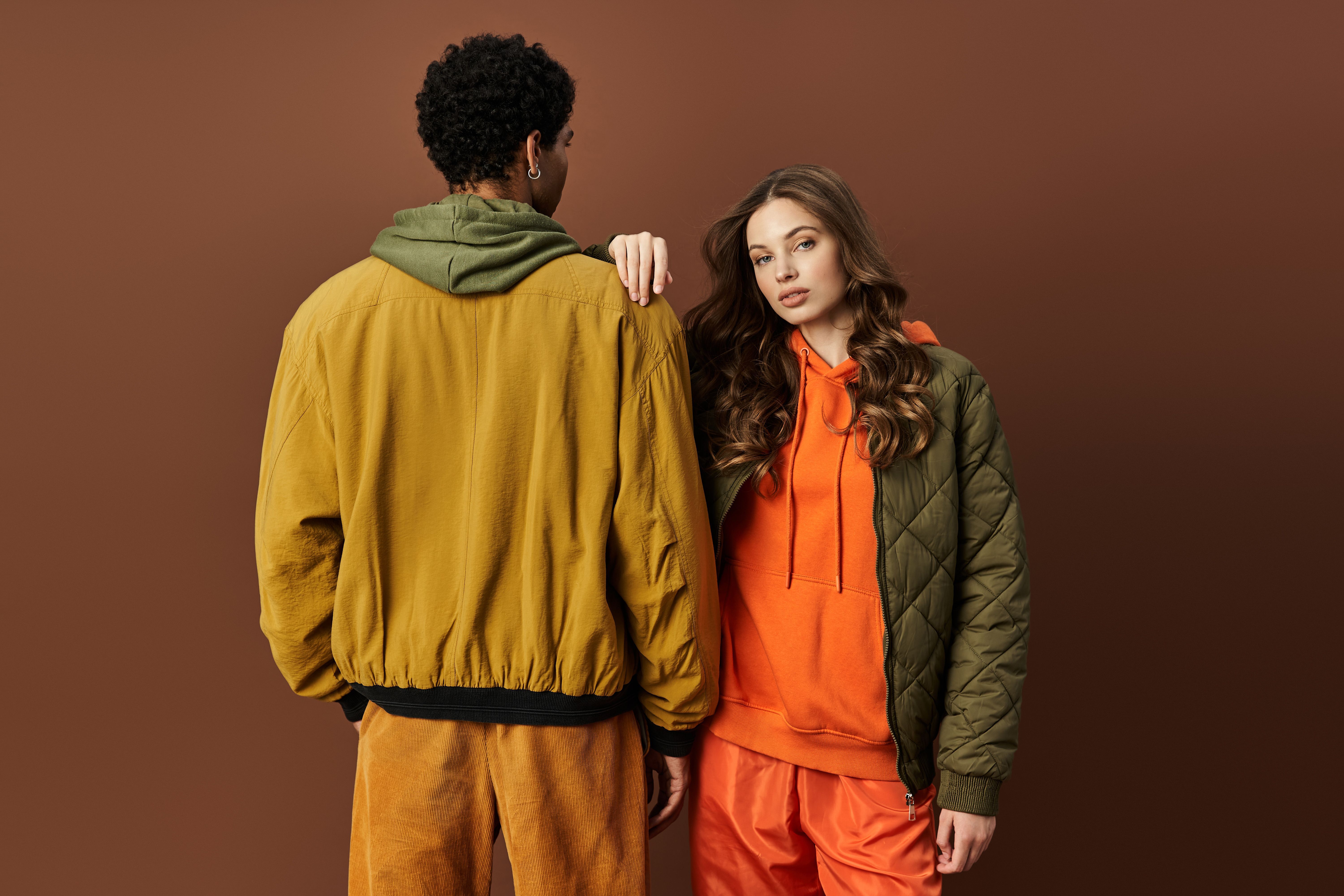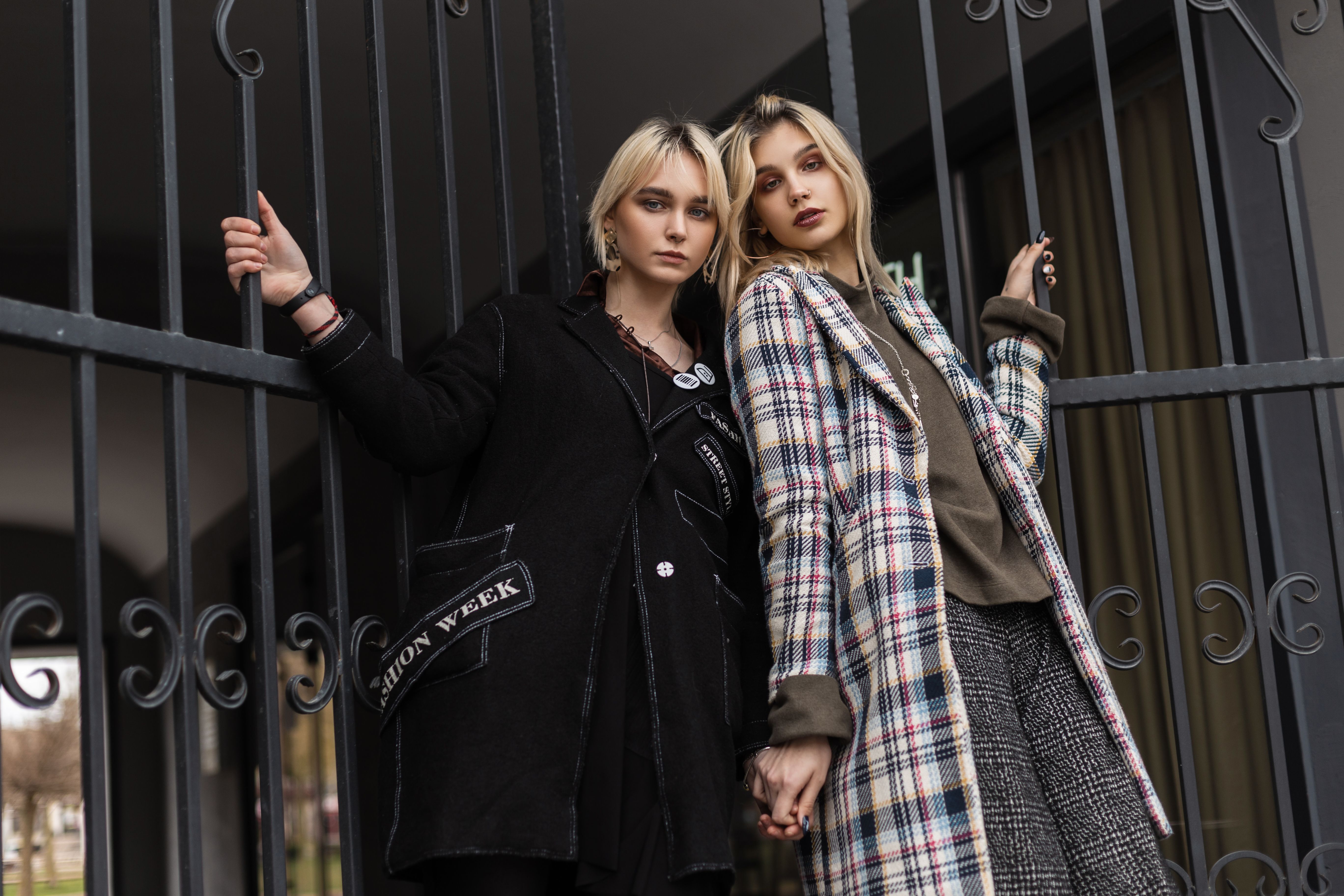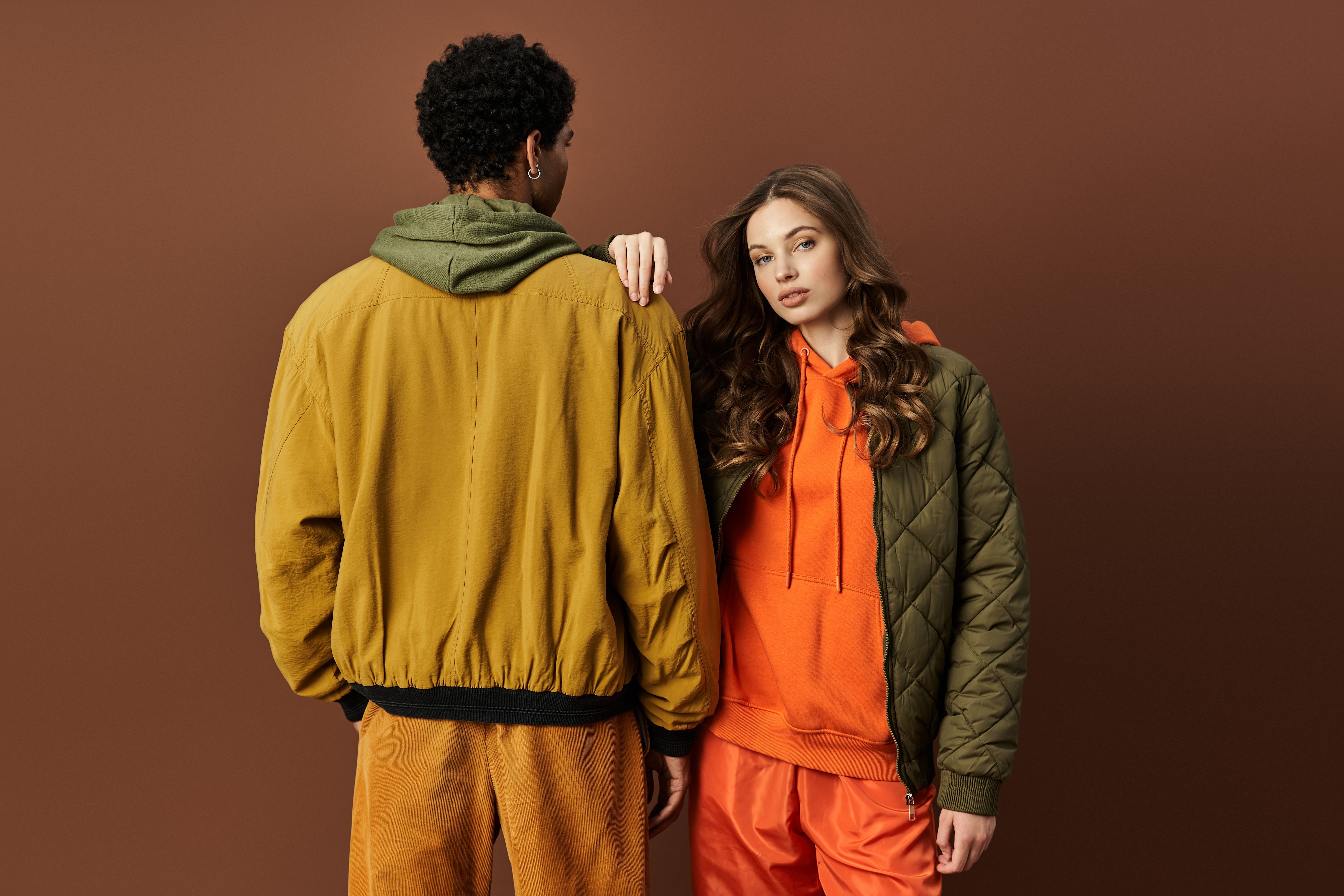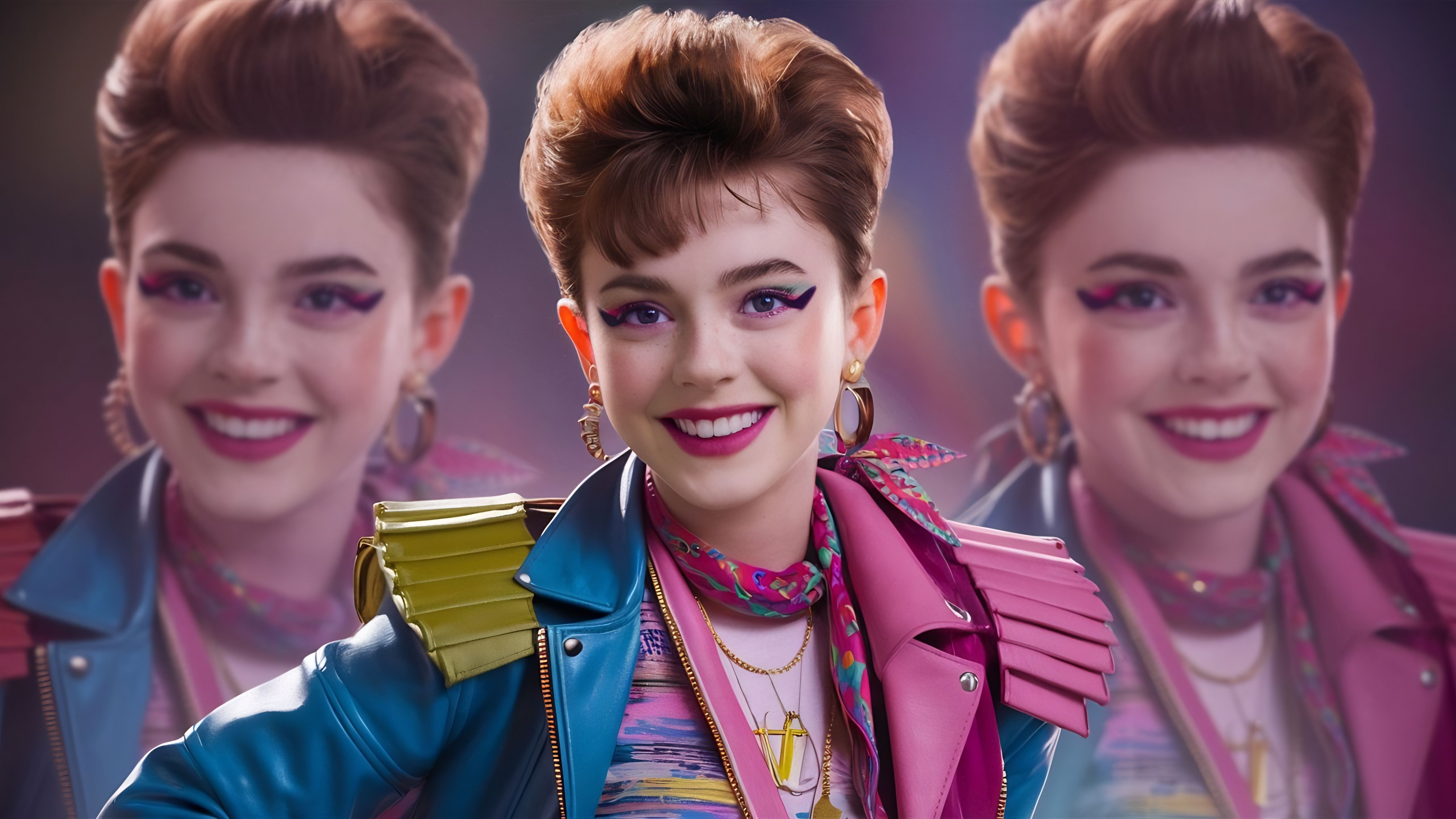How an AI Fashion Assistant Learns Your Style
Fashion Trends 2025: The Only Guide You Need


TL;DR
2025’s fashion trends are at the nexus of technology, sustainability, and individual expression. Expect playful yet purpose-driven styles (metallics, sheer layers, scarves) powered by AI-driven design, circular systems, and consumer values that demand both innovation and ethics.
Fashion has never just been about clothing. It’s a living, breathing language — a cultural mirror that reflects how we see ourselves, how we want to be seen, and the values we project into the world. From the feathers of ancient royalty to the digital twins of today, fashion tells stories of power, rebellion, identity, and belonging.
As we step into 2025, we find ourselves at the intersection of transformation and intention. Fashion isn’t just evolving; it’s being redefined. . According to a UniformMarket report, the U.S. apparel market is valued at about USD 365.7 billion in 2025, with a projected CAGR of ~2.11% from 2025 to 2028.
In this blog, we unpack everything you need to know about fashion trends in 2025. We’ll travel through time, tracing fashion’s origin and evolution. We’ll decode seasonal styles, dive into aesthetic personalities, explore AI's role, and offer tips to dress with purpose. Whether you're a trend chaser or a conscious dresser, consider this your ultimate guide to making fashion work for you — timelessly and intelligently.
The Evolution of Fashion Trends: From Function to Self-Expression

"Fashion is the armor to survive the reality of everyday life." – Bill Cunningham
1. Early Civilizations to Royal Dynasties
In ancient Mesopotamia, Egypt, and the Indus Valley, clothing signaled rank, tribe, and occasion. Linen, wool, and cotton were not just fabrics but statements of access and geography. Egyptian royalty wore gold-threaded tunics, while Mesopotamians embraced draped garments to beat the desert heat.
In Greece and Rome, garments like togas and chitons were as much about function as they were about citizenship and social order. The aesthetics were clean, draped, and symbolic.
During Medieval and Renaissance Europe, fashion was a form of control. Sumptuary laws dictated who could wear what. Corsets, ruffs, and silks marked class divides and gender roles, while layered clothing became a symbol of power and propriety.
2. 17th to 19th Century
By the late 1600s, France emerged as fashion’s epicenter, thanks to Louis XIV’s court. The term "couture" was born. Fashion became a political weapon and a means of flaunting status.
The Industrial Revolution changed everything. Mass production made fashion more accessible. Ready-to-wear clothing emerged, and with it, the idea of fashion as commerce. In Victorian England, modesty and formality reigned. Hoop skirts, high collars, and tailored suits laid the foundation of modern Western fashion codes.
3. 20th Century Transformations
The 1920s roared with rebellion. Flapper dresses, bob cuts, and jazz-inspired glamour reflected a society redefining women’s roles. By the 1950s and 60s, Hollywood glam and youth-driven mod culture shaped mass taste. It was the age of the cinched waist, pencil skirts, and mini dresses.
Then came the 70s through the 90s — a golden era of experimentation. Bohemian prints, punk leather, hip-hop bagginess, grunge flannel, and global fusion dominated runways and streets alike. Fashion stopped whispering and started shouting.
4. Fashion in the 2000s–2020s
The new millennium saw the rise of fast fashion. With brands like Zara and H&M churning out weekly trends, consumers embraced volume over value. Social media and reality TV turned everyday people into style icons.
As the 2010s closed, a reckoning began. Size inclusivity, genderless collections, and sustainability took center stage. AI stylists, virtual try-ons, and digital fashion items became real tools in shaping what we wear and how we experience style.
Fashion was no longer just wearable. It became interactive, predictive, and data-informed. And that laid the groundwork for what 2025 now brings.
Top Fashion Trends for 2025 (Literally)

According to fashion powerhouses like Vogue, WGSN, and Pinterest Predicts, 2025 is all about intention with expression. Comfort meets high concept, and vintage nostalgia dances with futuristic flair.
Here are some breakout trends to watch
- Scarf Skirts
This hybrid garment is redefining versatility in wardrobes. Lightweight and asymmetric, scarf skirts take cues from sarongs, often featuring convertible ties, dual prints, and even modular components for multi-use styling. Popularized by influencers during summer festivals, they are expected to dominate vacation and resortwear markets.
2. Polka Dot Dresses

Once retro, now runway. Polka dots in 2025 are being reimagined through 3D-textured prints, oversized scale, and bold color contrasts. Designers like Christopher Kane and Carolina Herrera are playing with proportions and layered dot patterns, making them both vintage and avant-garde
3. Liquid Metallics

This trend channels a “wearable future.” Fabrics that look like molten metal — silver, bronze, iridescent blue — are making their way into everything from party dresses to bomber jackets. Designers are integrating reflective, fluid fabrics for both performance and aesthetics, pushing metallics into daywear.
4. Sheer Layering

The transparency trend is no longer just risqué — it’s refined. Think sheer overlays, tulle trousers, translucent trenches. Layering techniques have matured, offering dimension, sensuality, and subtle drama without revealing too much.
5. Digital Glam

This isn’t just a sparkle — it's a smart sparkle. AR-reactive garments, LED-embedded accessories, and fabrics that change with light or temperature are entering the fashion mainstream. Ideal for nightlife, tech runways, and interactive experiences, digital glam is the bold intersection of fashion and tech.
The “2025 U.S. Fashion Consumer Outlook Report” by FashionUnited, finds shifting shopping behavior and digital engagement trends among American consumers in fashion.
Defining Characteristics of 2025 Fashion
- Sustainable Materials
Over 60% of leading fashion houses have pledged to adopt regenerative fabrics by 2025 — with mushroom leather, recycled PET, and algae-based textiles gaining ground.
According to TheRoundup, 72% of U.S. consumers are aware of sustainability issues in fashion, and 55% say they are interested in buying sustainable clothing.
- Tech-Infused Wearables
The global wearable tech market is projected to reach $150 billion by 2025. From UV-sensing dresses to temperature-adapting coats, fashion is becoming functional and responsive.
- Circular Fashion Economy
With 1 in 3 Gen Z shoppers preferring resale to retail, platforms like Depop and Rent the Runway are reshaping ownership. Brands are investing in take-back programs and zero-waste lines.
The Guardian reports that secondhand clothing sales grew 15% in 2024, reaching USD 227 billion globally, and AI and U.S. tariffs may fuel further growth in 2025.
Fashion in 2025 isn't just what you wear. It's what you believe, how you behave, and how you move through the world—from your closet to your conscience.
Fashion Trends by Season: Year-Round Style in 2025

1. Spring Fashion
Spring 2025 is a celebration of softness and subtle energy. Expect botanical motifs on everything from trousers to trench coats, combined with lacework and relaxed tailoring. Think garden-party sophistication with breathable functionality. Shades of lilac, sage, and marigold are leading the color chart.
2. Summer Fashion
Summer fashion leans into cooling innovations and breezy silhouettes. SPF-integrated fabrics are becoming a standard, while pieces like bralettes, scarf skirts, and oversized shirts redefine street-to-beach versatility. It’s the season for airy minimalism with a splash of bold digital prints.
3. Fall Fashion
Autumn calls for deeper hues and textural play. Knitwear gets smarter with tech-infused thermal properties, and asymmetrical cuts provide edge. Think rust tones, caramel corduroys, and slouchy leather jackets. Layering isn’t just functional — it’s a design statement.
4. Winter Fashion
When the temperatures drop, fashion in 2025 heats up. Oversized coats take center stage, often lined with eco-fur or powered by smart-heating elements. Metallic fabrics make cold-weather glam a reality, and boots evolve into statement pieces with embedded weather sensors.
Fashion Trends by Aesthetic & Personality

Fashion is personal. In 2025, dressing by aesthetic archetype helps people find their voice through their wardrobe. Here are the key personalities shaping closets this year:
Minimalist Fashion
For those who live by the "less is more" philosophy, minimalist fashion offers refined luxury. Elevated basics, clean silhouettes, and monochrome palettes dominate. The emphasis is on quality tailoring, breathable materials, and intentional wardrobe curation.
Maximalist Fashion
Maximalism is loud, proud, and unapologetically expressive. Think eclectic prints, clashing patterns, exaggerated shapes, and statement accessories. The key isn’t chaos — it’s confidence. Maximalist dressers in 2025 are storytellers in motion.
Chic & Contemporary Fashion
This aesthetic blends timeless silhouettes with updated details. Tailored blazers with metallic buttons, slip dresses in abstract prints, and accessories that bridge vintage with now. It’s all about understated elegance with a clever twist.
Retro Fashion
Y2K continues its reign, joined by 80s glam and 90s streetwear. Denim-on-denim, oversized blazers, bucket hats, and platform sneakers remain hot picks. What makes retro fashion thrive in 2025 is the way old trends are reimagined with modern cuts and sustainable fabrics.
Occasion-Based Fashion Trends: Dress With Intention

From daily wear to defining moments — how we dress defines how we show up.
Fashion in 2025 understands that one size — or style — doesn’t fit all. Dressing by occasion is more nuanced than ever, influenced by context, comfort, and cultural cues.
1. Everyday & Casual Fashion
Think loungewear, but elevated. Matching co-ord sets, jogger-blazer combos, and slip-on sneakers define the off-duty aesthetic. Airport looks are now Instagram moments, with oversized shades, trench coats, and luxury totes. The rise of functional streetwear means hoodies, cargos, and sneakers dominate the casual style map, blending performance with aesthetic.
2. Professional & Workwear Fashion
Workwear has diversified with a hybrid work culture. Office-goers now sport smart-casual blends — structured pants with soft knits, blazers over tees, and loafers that transition from Zoom to boardroom. Gender-neutral power suits with wider lapels and tapered fits are reclaiming authority without rigidity. In creative industries, freedom rules — patterned shirts, relaxed trousers, and curated sneakers express individuality without crossing the professional line.
3. Social & Lifestyle-Based Dressing
From brunches to bachelorette, dressing for lifestyle is both expressive and strategic.
- Brunch/Dinner Dates: Think elevated casual — midi skirts with crisp shirts, linen blazers over ribbed dresses, soft knits with tailored trousers.
- Festivals & Parties: Prints, shimmer, and eclectic layers define festive dressing. Cultural blends — like lehengas with sneakers or kimonos with crop tops — reflect a world that dresses without borders.
- Night Outs: It’s about confidence and charisma — sheer blouses, bodycon dresses, metallic trousers, and platform heels.
4. Special Occasions
- Weddings: Expect a fusion of heritage and trend. Brides experiment with color (think powder blue and blush), while grooms embrace embroidered bandhgalas or velvet tuxedos. Guests go for pastels, capes, and indo-western styles.
- Pregnancy: Maternity fashion is flattering and fluid. Empire-line dresses, wrap tops, and ruched fabrics prioritize comfort and silhouette.
- Cultural Ceremonies: Fashion reflects tradition with a modern touch — from sequined sarees for Diwali to heritage embroidery for Christmas dinners.
Fashion Trends Across Demographics

Fashion is a generational conversation, and 2025 is hearing from everyone.
1. Gen Z
Digital-first and proudly expressive, Gen Z is leading fashion’s remix culture. They embrace thrift shopping, gender fluidity, and subcultures — from coquette-core to cyberpunk. TikTok is their runway, and ‘aesthetic-hopping’ is the norm.
2. Millennials
With a focus on functional luxury, Millennials are curating capsule wardrobes that reflect lifestyle and values. Think structured denim, neutral palettes, versatile dresses, and sustainable brands that align with their eco-conscious mindset.
3. Men’s Fashion Trends
Masculine dressing in 2025 is softer, more explorative. Relaxed tailoring, monotone layering, pleated pants, and bold sneakers are in. Accessories — especially bags and rings — break traditional molds.
4. Women’s Fashion Trends
From high-waisted pants to slinky dresses with defined shoulders, women’s fashion is a blend of sharp and soft. Pastels meet leather, tailored vests meet sheer skirts. Confidence is the common thread.
5. Gender-Neutral Fashion
Non-binary fashion champions fluidity. Oversized silhouettes, modular clothing, unisex hues (dusty blue, taupe, olive), and functional cuts offer space for all expressions. Brands are shifting from 'men/women' to 'fit by feel'.
Inspiration Behind Fashion Trends in 2025

Icons & Influence
Celebrities like Zendaya, Timothée Chalamet, Bella Hadid, and Harry Styles are redefining fashion boundaries. From red carpets to street style, they champion personal authenticity over trend conformity.
Runway to Reality
Fashion festivals and shows remain the ideal incubators. What starts on Paris or Milan runways trickles into high-street brands through social media amplification. Expect to see reimagined runway pieces on fast-fashion racks within weeks.
Celebrity-Brand Collabs
Think Rihanna’s Savage X Fenty or Pharrell’s Louis Vuitton debut. These collaborations blend cultural relevance with business acumen, driving fashion as both an art and economy.
The Role of AI in Infusing Fashion Trends
AI isn’t just an accessory — it’s a designer, stylist, and shopping assistant rolled into one.
AI Twins (e.g., Glance AI)
Imagine seeing yourself in an outfit before you try it on. That’s the power of AI twins. Google-backed Glance AI allows you to visualize yourselves in curated looks — instantly. From festivals to first dates, Glance helps you discover and own styles with just a tap.
Generative Fashion Models
AI can now generate entire clothing lines based on moodboards or trend signals. Fashion designers use generative tools to predict silhouettes, fabrics, and color palettes months in advance — reducing waste and elevating creativity.
Inventory Mapping
AI maps real-time buying behaviors to forecast demand. If ruched skirts or silver boots are trending on TikTok, AI ensures they’re stocked in stores. This minimizes overproduction and maximizes profit, enabling brands to meet consumers where they’re headed, not where they’ve been.
Practical Fashion Tips: How to Dress Well in 2025

Dressing well in 2025 is about balancing trends with personal style and conscious choices. Here’s how you can make fashion work for you—smartly, sustainably, and confidently.
1. Dress for Your Body Type, Not Just Trends
Understanding your body shape is the foundation of great style. Instead of blindly following trends, choose cuts and silhouettes that enhance your natural proportions and comfort. For example:
- Hourglass: Embrace tailored waistlines and structured fabrics to highlight curves.
- Rectangle: Opt for layered looks and belts to create definition.
- Apple: Go for A-line dresses and vertical stripes to elongate.
- Pear: Balance your silhouette with bold tops and streamlined bottoms.
2. Build a Thoughtful Capsule Wardrobe
Capsule wardrobes simplify dressing and reduce decision fatigue. Focus on versatile, high-quality staples that can be mixed and matched:
- Neutral basics: well-fitted jeans, classic white shirts, tailored blazers.
- Seasonal accents: a statement jacket or seasonal color pieces.
- Textural variety: balance cottons, silks, and knits to suit different occasions.
3. Invest in Statement Accessories That Elevate
Accessories are the quickest way to update your look. In 2025, prioritize:
- Sustainable jewelry: Ethically sourced metals and recycled materials.
- Bold eyewear: Oversized or geometrically shaped frames.
- Functional bags: Convertible crossbodies or smart backpacks with tech features.
- Footwear: Chunky sneakers and artisan-crafted loafers with comfort technology.
4. Shop Sustainably Without Compromising Style
Sustainability is no longer niche—it’s essential. To stay stylish and eco-conscious:
- Choose brands with transparent supply chains and regenerative practices.
- Explore rental and resale platforms for luxury and everyday fashion.
- Prioritize timeless pieces over fast fashion trends.
- Care for your garments properly to extend their life.
A 2024 PwC survey shows U.S. consumers are willing to pay, on average, 9.7% more for sustainably produced or sourced goods—even amid inflation.
Conclusion
Fashion trends in 2025 transcends fabric and form—it’s a powerful blend of identity, technology, and responsibility. Fashion becomes a personal and cultural statement.
It is the year to embrace your fashion twin, and celebrate your choices. After all, the ultimate trend this year is authenticity—being unapologetically you.
Step into 2025 with confidence, curiosity, and creativity. Your wardrobe is ready to tell your unique story, where data meets desire, heritage meets tech, and personal style outshines mass trends. It’s a playground for creativity and a mirror of our evolving values.
Be bold. Be intentional. Be sustainably stylish.
But above all — be unapologetically you.
FAQs on Fashion Trends in 2025
1. What are the biggest fashion trends for 2025?
Scarf skirts, polka dots, liquid metallics, sheer layering, and digital glam lead 2025 trends, with sustainability and tech innovation shaping overall fashion narratives.
2. How is technology influencing fashion in 2025?
AI powers virtual styling, digital try-ons, and responsive wearables. Platforms like Glance AI help users visualize, personalize, and shop outfits instantly and intelligently.
3. What’s the role of sustainability in fashion this year?
Fashion in 2025 prioritizes eco-fabrics, rental platforms, resale culture, and take-back programs, making sustainable choices more accessible and stylish.
4. How can I stay trendy while shopping mindfully?
Invest in timeless pieces, use rental platforms for trends, and build a capsule wardrobe with ethical brands and sustainable materials.
5. What fashion aesthetics are trending by personality?
Minimalist, maximalist, retro, and chic styles dominate. Each aesthetic allows expressive yet wearable options tailored to your personality and lifestyle.
6. What’s trending across Gen Z and Millennials?
Gen Z embraces thrifted and TikTok trends, while Millennials prefer smart casuals, quality basics, and versatile, conscious fashion with long-term value.






